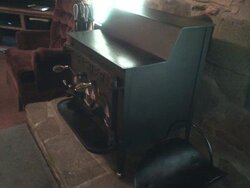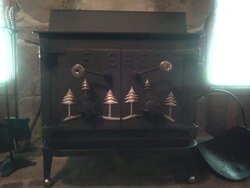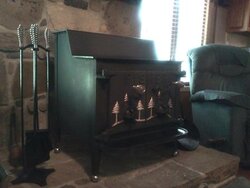Hey guys, I'm going to pick up a Fisher stove tomorrow and, was needing some info on them. I'll post a couple of pics. The price is 250.00, I think thats pretty good! It looks to be in really good shape. Anything I should look over really well before I commit? If you click on the pics it will show the whole pic!
New stove, need info?
- Thread starter RazrRebel
- Start date
-
Active since 1995, Hearth.com is THE place on the internet for free information and advice about wood stoves, pellet stoves and other energy saving equipment.
We strive to provide opinions, articles, discussions and history related to Hearth Products and in a more general sense, energy issues.
We promote the EFFICIENT, RESPONSIBLE, CLEAN and SAFE use of all fuels, whether renewable or fossil.




